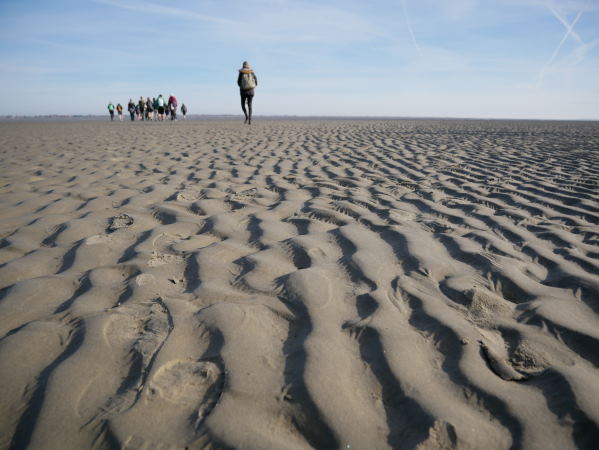
One Wadden Sea – One World Heritage
The Wadden Sea World Heritage is the largest tidal flat system in the world, where natural processes proceed largely undisturbed. It encompasses almost the entire Wadden Sea in Denmark, Germany and the Netherlands: an area of nearly 11,500 square kilometres along a coastal strip of about 500 kilometres.
The Wadden Sea’s major habitats are arranged along an offshore-inshore gradient. They are a fascinating demonstration of how physical forces and biological activities interact to generate conditions for life in a fragile environment. They form a complex system across environmental gradients of depth and salinity, height and dryness, exposure to hydrodynamics and winds, and substrates modified by organisms. Here, you can find an invaluable record of past and ongoing dynamic adaptation of plants, animals and their coastal environments to global change. Despite the fragility, productivity of biomass is one of the highest in the world and offers wide food availability for fish, shellfish and birds. The Wadden Sea is considered one of the most important areas for migratory birds in the world. Biodiversity on a worldwide scale is reliant on this site.
In 2009, the Wadden Sea was inscribed on UNESCO’s World Heritage List in recognition of the ‘Outstanding Universal Value’ of the area and the progress made in protecting and managing it for more than a generation.
How is it affected by climate change?
Climate change is rapidly becoming one of the most significant risks for World Heritage sites (IUCN). The Wadden Sea is already affected directly (e.g. by an increase in temperature and precipitation) and indirectly (e.g. by an import of southern warm-water species and changes in the timing of life cycle events, which were reported in the past decades). Future projections are fraught with high uncertainty and it is unclear how projected changes in temperature, precipitation patterns, sea level rises, erosion and sedimentation would affect Wadden Sea geomorphology, biodiversity and ecosystem services. Climate change and enhanced sea level rise may seriously impact the structure, functions, and characteristic biodiversity of the Wadden Sea ecosystem, as well as the safety of the inhabitants of the region.
Addressing the impacts of climate change, enhancing the resilience of the Wadden Sea ecosystem and developing and implementing adaptation strategies are among the focus themes of the Trilateral Wadden Sea Cooperation.
More Information:
- Website of UNESCO World Heritage Convention

Foto: Bramgæs - Nonnengänse - Foto Jan Sohler
